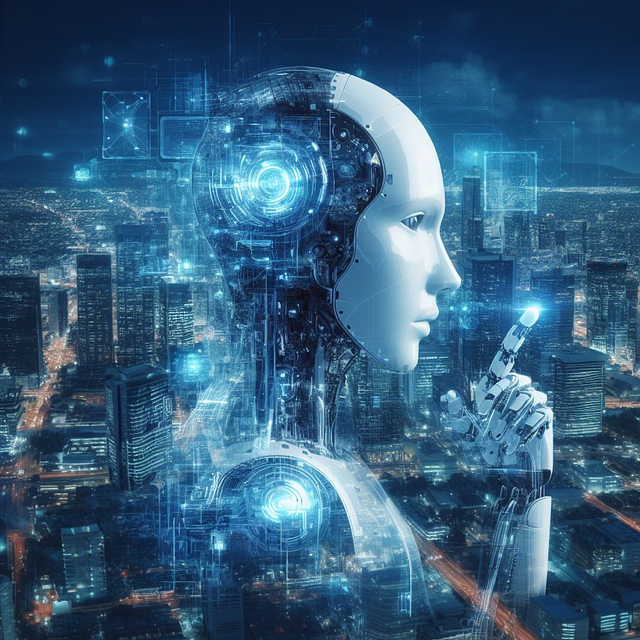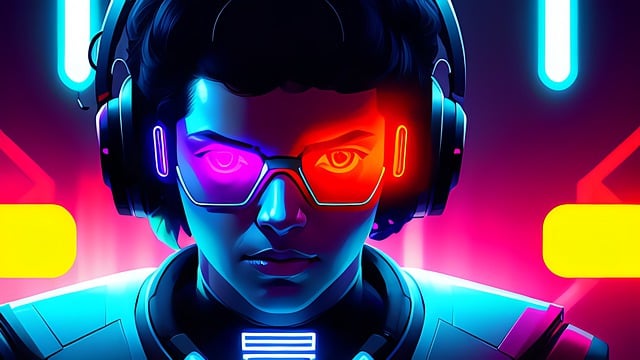“Unleash the power of conversational AI with our comprehensive guide on creating chatbot solutions. In today’s digital landscape, AI chatbots are transforming user interactions, offering 24/7 support, and enhancing customer experiences. This article takes you on a journey through the process, from grasping the fundamentals: understanding AI chatbot functionality and diverse types, to designing engaging conversation flows and crafting unique personas.
We’ll explore cutting-edge tools and technologies for development, ensuring optimal training, rigorous testing, and seamless deployment.”
- Understanding AI Chatbots: Their Functionality and Types
- Designing the Chatbot's Conversation Flow and Persona
- Developing the Chatbot: Tools and Technologies
- Training, Testing, and Deploying Your AI Chatbot
Understanding AI Chatbots: Their Functionality and Types

AI chatbots have transformed the way we interact with technology, offering a natural and intuitive way to communicate with machines. At their core, these chatbots leverage artificial intelligence, particularly natural language processing (NLP), to understand and respond to user queries. They can be categorized into several types based on their functionality.
Rule-based chatbots follow pre-defined rules and scripts to process inputs and generate outputs. They are useful for simple tasks like providing customer support or answering FAQs. On the other hand, AI-powered chatbots use machine learning algorithms to learn from user interactions, allowing them to adapt and improve over time. These advanced chatbots can handle complex requests, engage in multi-turn conversations, and provide personalized responses, making them ideal for various applications, including virtual assistants, healthcare support, and e-commerce assistance.
Designing the Chatbot's Conversation Flow and Persona

When designing a chatbot, one of the most crucial aspects is crafting its conversation flow and persona. The conversation flow determines how the chatbot interacts with users, what questions it asks, and how it guides them towards their desired outcomes. This involves mapping out various user paths, considering different scenarios, and ensuring smooth transitions between topics. By designing logical and intuitive conversations, you enhance user satisfaction and make your AI chatbots more engaging.
The persona of your chatbot plays a significant role in shaping the overall user experience. It includes deciding on the tone, language, and style of communication. For example, a chatbot designed for customer support might adopt a friendly, helpful tone, while one focused on education could maintain a more formal and informative style. Personas help establish trust and rapport with users, making interactions more natural and human-like. This is particularly important in the realm of AI chatbots, where an engaging and personalized conversation can significantly improve user engagement.
Developing the Chatbot: Tools and Technologies

Developing an AI chatbot involves choosing the right tools and technologies that align with your project’s needs. There are various platforms and frameworks available, ranging from simple rule-based systems to complex machine learning models. For basic conversational agents, natural language processing (NLP) libraries like NLTK or spaCy can be used to process user inputs and generate responses. These libraries offer features for text classification, intent recognition, and entity extraction.
For more advanced AI chatbots that leverage machine learning, platforms such as Dialogflow (by Google), IBM Watson Assistant, or Microsoft Bot Framework provide pre-built models and easy integration with cloud services. These platforms allow developers to train models using vast datasets and fine-tune them for specific use cases, enabling the creation of intelligent chatbots capable of understanding context, remembering user preferences, and generating dynamic responses.
Training, Testing, and Deploying Your AI Chatbot

Once your AI chatbot is built, it’s crucial to rigorously train, test, and deploy it for optimal performance. Training involves feeding vast amounts of data into the model, allowing it to learn patterns and responses. This process leverages machine learning algorithms to refine the chatbot’s understanding of human language. Testing is essential to ensure the chatbot accurately processes user inputs and generates appropriate outputs. It includes rigorous unit testing, integration testing, and beta testing with real users for feedback.
Deployment involves integrating the trained chatbot into your platform or application, making it accessible to end-users. A well-planned deployment strategy considers factors like scalability, security, and user experience. Continuous monitoring and iterative improvements based on user interactions are vital to keep your AI chatbot performing at its best and addressing any emerging challenges.
Creating an AI chatbot is a fascinating journey that involves understanding its core functionality, designing engaging conversations, and leveraging the right tools for development. By mastering these steps, from conceptualization to deployment, you’ll be well-equipped to build intelligent, user-friendly AI chatbots that enhance customer experiences and drive business value. Embrace the power of conversational AI and watch your ideas come to life!
